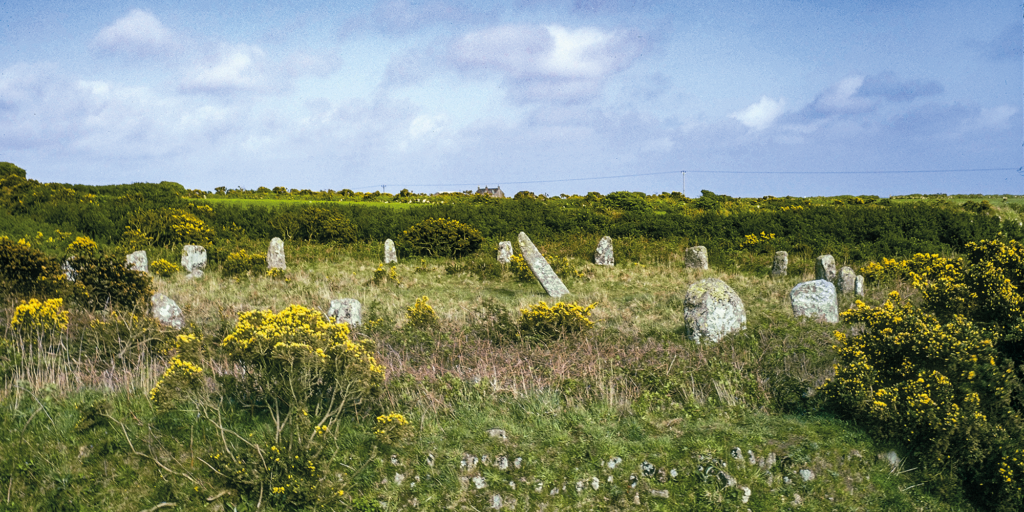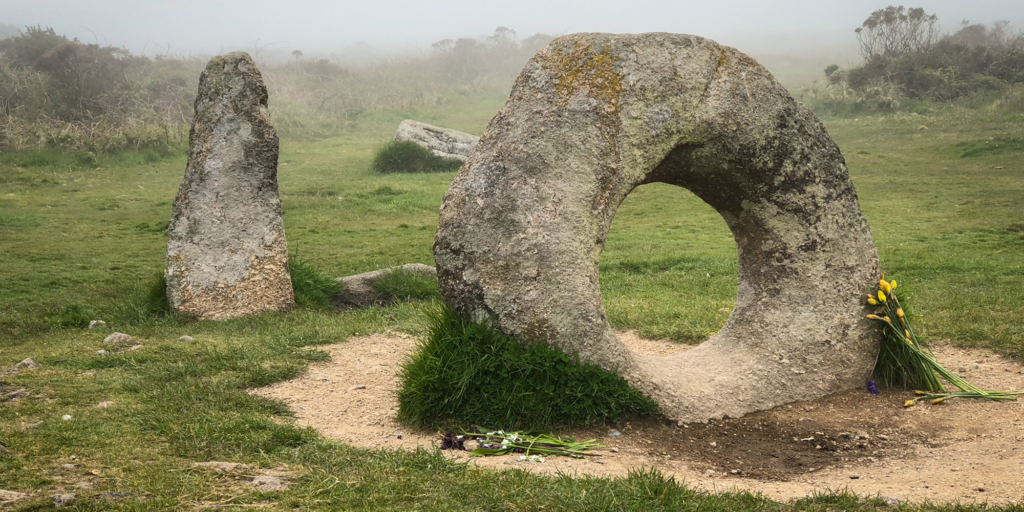

A local’s guide to ancient Penwith
Words by Rosie Cattrell
Set in a landscape still alive with an atmosphere of magic, the ancient sites that populate this rugged and wild stretch of Cornish land have been a part of the scenery for thousands of years, and still invite many a passing visitor to investigate their enchanting and mysterious histories. From stone circles and menhirs to chambered cairns and fogous, the heath and moorland of Penwith is strewn with memories from a time long passed, and each relic stands waiting for us to discover a part of Cornwall not quite yet forgotten.
Just outside the parish of Morvah sits a structure with the potential to be over 3,500 years old. Men-An-Tol, Cornish for ‘holed stone’, is one of the best-known megalithic structures in Britain, shrouded in myth and ancient folklore and known to some as the ‘Devil’s Eye’. While its exact purpose will forever be unknown, it is said to have the miraculous ability to supposedly cure certain ailments, particularly rickets in children, and it is thought that infants would be passed through the hole to ease their suffering, while to this day others have been known to climb through the gap in the interest of fertility. Superstition put to one side, Men-An-Tol is truly a sight to behold, and certainly worth a stop on your way to an adventure elsewhere.
Not too far away, in a gently sloping field between Lamorna and St Buryan, lies The Merry Maidens. Thought to date back to somewhere between the late Stone Age and the early Bronze Age, each of the 19 pieces of granite remain in a perfectly spaced and circular formation, diminishing in size from largest to smallest as the circle progresses in what is likely to present the lunar cycle. During the Victorian period, a story evolved that The Merry Maidens were a group of young girls, revelling in dance on a day meant for rest and worship. As punishment, the story goes that the girls were turned to stone, fixed forever in dance, while the pipers who played for them can be seen as two granite pillars not far from the circle, turned to granite as they fled.
Just off the beaten track between St Buryan and Carn Euny you’ll stumble across a similar specimen of Cornish heritage, laced with a deep-rooted magic from a forgotten age. What makes Boscawen-Un slightly different is the impressive centre pillar stone that stands in the centre of the stone circle, interestingly pre-dating the 19 stones that surround it. It is believed by many that this monument would have been used for ritualistic purposes in the Neolithic period. At the time of construction, it is thought that the stone circle would have been used for all manner of rituals and community ceremonies. In the middle ages this would have been a place of significance for Druidic gatherings, and in 1928 the Cornish Gorsedh gathered here for the first time in over 1,000 years.
A mysterious buzz of history and ancient heritage linger over these Cornish sites, each one taking us back to a time of superstition and ritualistic ceremony as we ponder on the meaning of these spectacular granite arrangements, the true answer to which we can only imagine.


